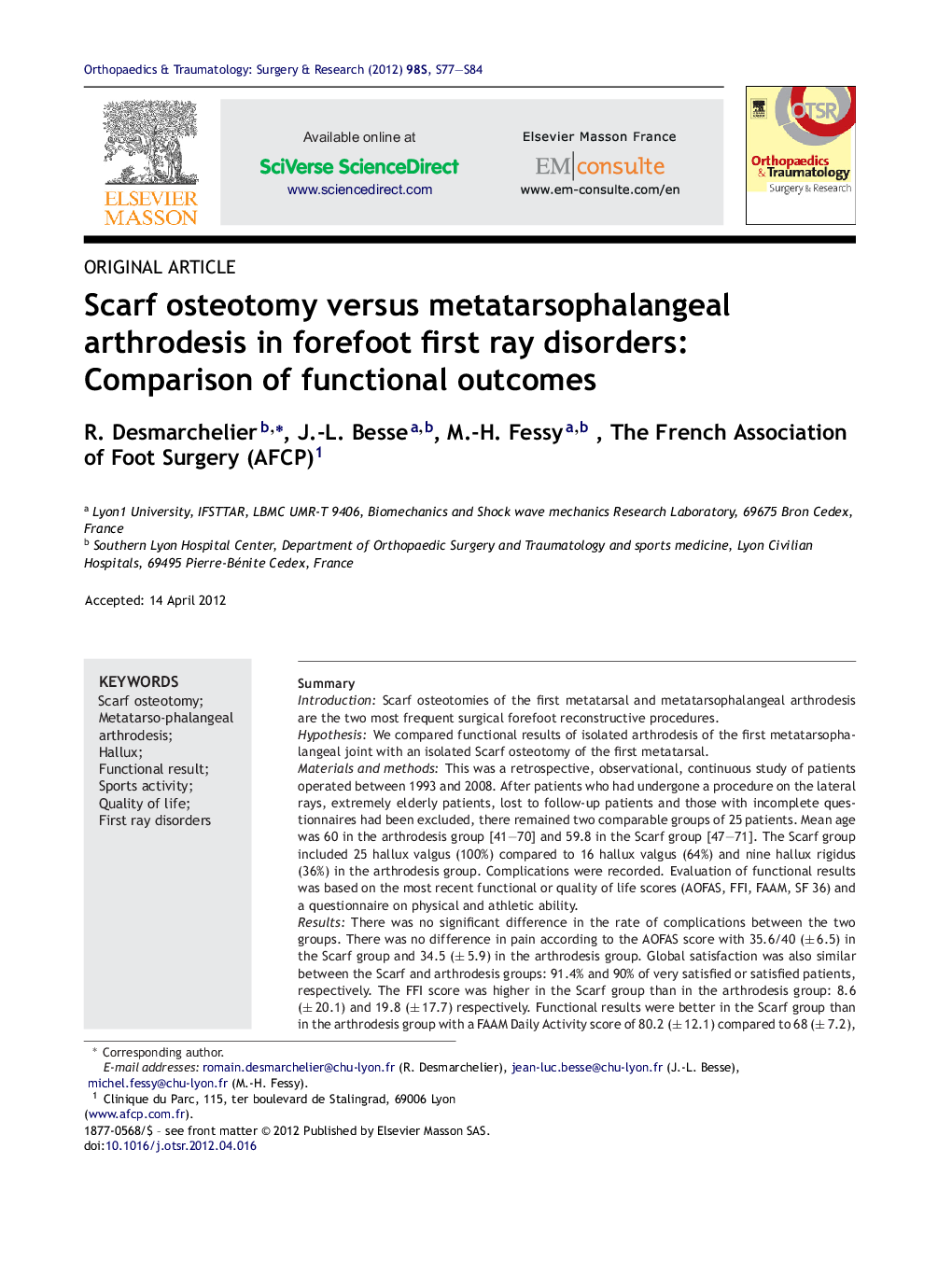| Article ID | Journal | Published Year | Pages | File Type |
|---|---|---|---|---|
| 4081800 | Orthopaedics & Traumatology: Surgery & Research | 2012 | 8 Pages |
SummaryIntroductionScarf osteotomies of the first metatarsal and metatarsophalangeal arthrodesis are the two most frequent surgical forefoot reconstructive procedures.HypothesisWe compared functional results of isolated arthrodesis of the first metatarsophalangeal joint with an isolated Scarf osteotomy of the first metatarsal.Materials and methodsThis was a retrospective, observational, continuous study of patients operated between 1993 and 2008. After patients who had undergone a procedure on the lateral rays, extremely elderly patients, lost to follow-up patients and those with incomplete questionnaires had been excluded, there remained two comparable groups of 25 patients. Mean age was 60 in the arthrodesis group [41–70] and 59.8 in the Scarf group [47–71]. The Scarf group included 25 hallux valgus (100%) compared to 16 hallux valgus (64%) and nine hallux rigidus (36%) in the arthrodesis group. Complications were recorded. Evaluation of functional results was based on the most recent functional or quality of life scores (AOFAS, FFI, FAAM, SF 36) and a questionnaire on physical and athletic ability.ResultsThere was no significant difference in the rate of complications between the two groups. There was no difference in pain according to the AOFAS score with 35.6/40 (± 6.5) in the Scarf group and 34.5 (± 5.9) in the arthrodesis group. Global satisfaction was also similar between the Scarf and arthrodesis groups: 91.4% and 90% of very satisfied or satisfied patients, respectively. The FFI score was higher in the Scarf group than in the arthrodesis group: 8.6 (± 20.1) and 19.8 (± 17.7) respectively. Functional results were better in the Scarf group than in the arthrodesis group with a FAAM Daily Activity score of 80.2 (± 12.1) compared to 68 (± 7.2), a FAAM Sports Activity score of 29.7 (± 6.7) compared to 25.2 (± 7.6) and a FAAM Global Function score of 94% (± 10.8) compared to 87% (± 15.7), respectively. The Global SF36 score was higher in the Scarf group than in the arthrodesis group: 70.9% (± 14.1) and 62.3% (± 20.6) respectively, which was due to a higher Mental Health score in the Scarf group: 68.7% (± 14.2) and 60.4% (± 19.3) respectively. In the area of sports activities the Scarf group practiced more hiking than the arthrodesis group (74% versus 42% respectively). There was no difference for other activities.Discussion and conclusionThis study provides detailed information on the level of physical and sports activities that are practiced following these procedures, so that the patient can be better informed.Level of evidenceLevel III. Comparative retrospective.
